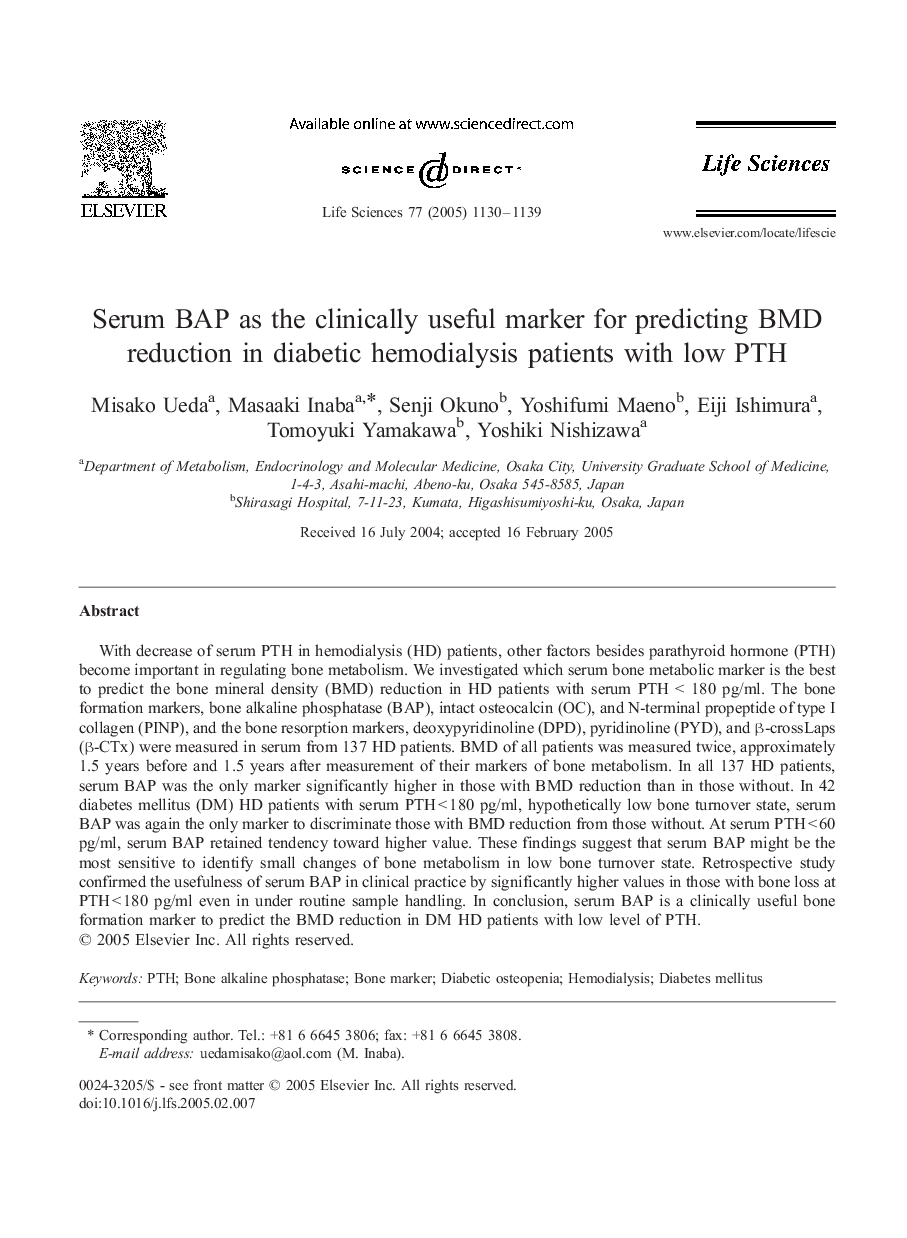| Article ID | Journal | Published Year | Pages | File Type |
|---|---|---|---|---|
| 9012796 | Life Sciences | 2005 | 10 Pages |
Abstract
With decrease of serum PTH in hemodialysis (HD) patients, other factors besides parathyroid hormone (PTH) become important in regulating bone metabolism. We investigated which serum bone metabolic marker is the best to predict the bone mineral density (BMD) reduction in HD patients with serum PTH < 180 pg/ml. The bone formation markers, bone alkaline phosphatase (BAP), intact osteocalcin (OC), and N-terminal propeptide of type I collagen (PINP), and the bone resorption markers, deoxypyridinoline (DPD), pyridinoline (PYD), and β-crossLaps (β-CTx) were measured in serum from 137 HD patients. BMD of all patients was measured twice, approximately 1.5 years before and 1.5 years after measurement of their markers of bone metabolism. In all 137 HD patients, serum BAP was the only marker significantly higher in those with BMD reduction than in those without. In 42 diabetes mellitus (DM) HD patients with serum PTH < 180 pg/ml, hypothetically low bone turnover state, serum BAP was again the only marker to discriminate those with BMD reduction from those without. At serum PTH < 60 pg/ml, serum BAP retained tendency toward higher value. These findings suggest that serum BAP might be the most sensitive to identify small changes of bone metabolism in low bone turnover state. Retrospective study confirmed the usefulness of serum BAP in clinical practice by significantly higher values in those with bone loss at PTH < 180 pg/ml even in under routine sample handling. In conclusion, serum BAP is a clinically useful bone formation marker to predict the BMD reduction in DM HD patients with low level of PTH.
Related Topics
Health Sciences
Medicine and Dentistry
Cardiology and Cardiovascular Medicine
Authors
Misako Ueda, Masaaki Inaba, Senji Okuno, Yoshifumi Maeno, Eiji Ishimura, Tomoyuki Yamakawa, Yoshiki Nishizawa,
